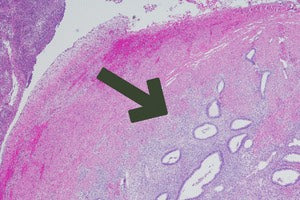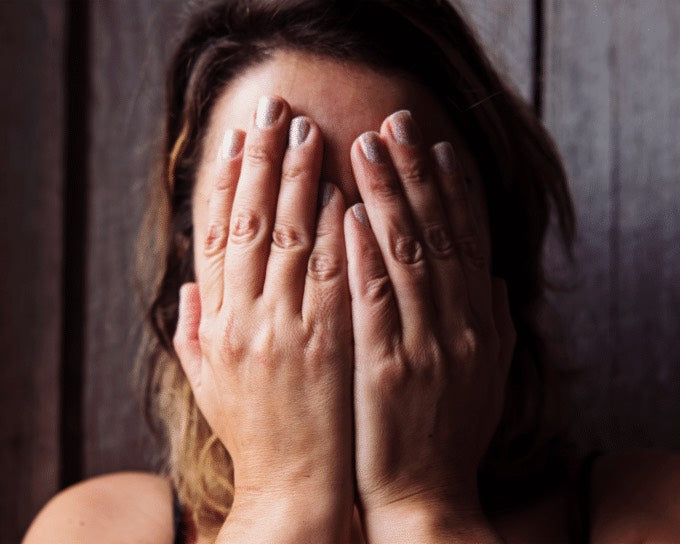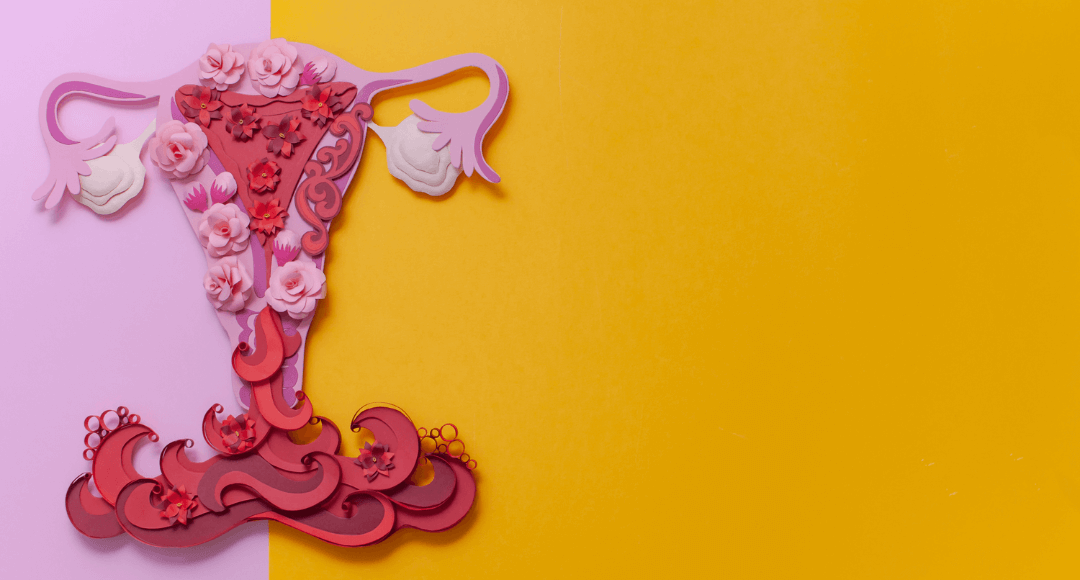You may have heard of it before and maybe you haven't. Not surprising, because endometriosis is a chronic disease. But it is also strange, because it occurs in 1 in 10 people, and some patient organizations even suspect 1 in 7 (as many as there are diabetes patients). A lot, right?! Unfortunately, there is not yet much research into this and extensive information about this, despite the fact that it is one of the most common conditions. And we think that needs to change.
What exactly is endometriosis?
With endometriosis, foreign tissue can be found throughout the body (e.g. on the diaphragm and lungs), but mainly in the abdominal cavity, on and around the ovaries, bladder and intestines. There it causes adhesions of organs and inflammatory reactions. In many women, the tissue is sensitive to hormones, which is reflected in, among other things, very painful menstrual complaints every month and fertility problems. However, many women also experience pain every day of the month due to the already affected organs and nerves.

Endometriosis can occur in teenagers during the first menarche (menstruation) and can last well after menopause. Not all women with endometriosis notice that they have complaints. This is also because women often brush off the pain and act as if there is not much going on, because they are told by those around them (e.g. mother) or by their GP/gynecologist that pain during menstruation is normal and is part of women's health. are. Because of this and because the knowledge about this disease among general practitioners and gynecologists is woefully low, it often takes longer before the condition can be diagnosed.
Furthermore, the endometriosis tissue is often found in embryos.
Symptoms; especially pain
Pain is central to endometriosis. There are a number of symptoms that are common in women with endometriosis. It is often associated with severe menstrual pain. This can be before, during or after menstruation. However, this is not necessarily the case for everyone. Some people mainly experience problems around ovulation and others even every day.
Endometriosis can also take many other forms and, for example, cause (chronic) abdominal pain, fatigue, bloating, back pain, pain when wearing a tampon, heavy menstrual bleeding , intestinal and bladder problems, pain that radiates to the buttocks or legs, fertility problems or pain during sex.

Endometriosis is the cause of infertility in 40 percent of all women who have problems with their fertility. It is therefore very important that it is detected early so that action can be taken.
It is often survival with endometriosis
For women dealing with endometriosis, life often feels more like survival. To this day, we still hear too little about this benign condition, even though 1 in 10 women struggle with it every day. Women often feel not taken seriously or heard. They are sent away with their pain complaints, a wrong diagnosis is made or things are talked into them, which can give them the feeling that it is all in their head. This is of course not okay and can be very frustrating.
Endometriosis has a major impact on the quality of women's daily lives.

Endometriosis has a major impact on the quality of women's daily lives. To what extent varies per person and per moment. It depends on where the endometriosis tissue is located and what period you are in. Sometimes women do not experience any problems for a longer period of time, but the complaints can then resurface, for example because endo tissue was left behind during an operation. Endometriosis can be seriously intense and can cause you to collapse, vomit, feel like your stomach is on fire and you can no longer function normally. In the long term, it can cause severe (nerve) pain, serious adhesions of the organs, cysts with blood and/or lumps, damage or failure of organs and infertility.
Furthermore, mentally it has a major influence on women and their self-image. But it also has an impact on your social life, your career, your body or any desire to have children. There is a lot to consider if you have been diagnosed with endometriosis. You can feel very lonely and insecure when you have to live with this disease. That's why it's very important to talk to people about it.
Treatment of endometriosis
Unfortunately, endometriosis does not go away on its own. Endometriosis can sometimes be controlled with medication or surgery. It is often recommended to first try painkillers or a medication with hormones. The pill is often used to reduce the build-up of the uterine lining and thus sometimes also the complaints. It's just not that it can be prevented with hormones. For example, using the pill can also worsen endometriosis. Some treatments can have unpleasant side effects or risks.
During surgery, the endometriosis tissue is cut away by a specialist. This often gives women the best chance of improvement, but there is no guarantee that this will be the case. Exercise and avoiding stress is important anyway. Other things that women try for complaints are acupuncture, pelvic floor physio, osteopathy and homeopathy.
An anti-inflammatory diet can help reduce symptoms
This concerns fresh and unprocessed food. Lots of fruit and vegetables and good fats. These are omega-3 fatty acids. These are found in nuts, oily fish and olive oil, among others. You can also try healthy carbohydrates found in quinoa, oatmeal and brown rice. It is better to avoid sugar, alcohol, caffeine and gluten, because this can worsen the symptoms.
Research into the causes
We do not (yet) know why one woman suffers from endometriosis and another does not. A lot of research still needs to be done on this. The immune system may play a role, but hereditary factors, lifestyle, hormones, immune disorders, stem cells and nutrition may also play a role. Furthermore, endometriosis is also thought to be a congenital defect or environmental factors such as environmental pollution can influence its development. Endometriosis can only be diagnosed with various examinations such as ultrasound, keyhole surgery or MRI.
It is important that more research is conducted into endometriosis, so that it can be recognized and treated earlier by doctors. It's hard to imagine, but until 2002 there was no information available about endometriosis in Dutch. In the medical world, care is still largely focused on the male body. Due to ignorance and lack of good knowledge, many women suffer from physical complaints for too long. Endometriosis is very complicated and is often underestimated. The symptoms associated with endometriosis are very different and also resemble those of other menstrual problems.
On average, it takes about 7 to 10 years for women to be diagnosed with endometriosis
A diagnosis should not take so long! It is very important to listen to your own body and the signals it sends. It still regularly happens that certain complaints are dismissed by ourselves, but also by doctors. Take yourself, your body and your complaints seriously. Because living with so much pain is not normal. Not during menstruation, but also not outside the cycle. Get to know your cycle and especially your body. Everyone dealing with endometriosis is looking for their own path and treatment that feels good and suits them. Make sure you are properly informed about this and have discussed all possible options, side effects and treatments. This is the only way you can find out what hopefully works for you.
The month of March is all about endometriosis
Attention is being drawn around the world to this condition, which affects approximately 176 million women worldwide. During Endometriosis Awareness Month it is shown that severe menstrual pain, pain during sex and pain while going to the toilet are not normal.

This article was created through a collaboration between Sanne Sneijder (Moodies intern) and BehindEndo. Would you like more information about endometriosis? The Flemish non-profit organization Behind Endo (Stories) has an extensive website www.behindendo.be and this month is organizing a photo campaign 'Give endometriosis a face' in which they share 1 photo and experience story of an endometriosis patient every day.
Sources:
Endometriosis Awareness Month (no date). Endometriosis Foundation .
I have endometriosis and I want to choose a treatment (2021) | Thuisarts.nl .
Kragten, P. and Scholze, S. (2017) “Endometriosis: pain and infertility (1 in 8),” in Beautiful red is not ugly. Hilversum: Splint Media, pp. 118–120.
van den Brand, M. van den (2021) Living with endometriosis: How to best deal with it, Women's Health .
Verena (2022) I have endometriosis, what now?!, Unusual Period. Endometriosis Foundation .
Video: When the Doctor Doesn't Take You Seriously (2017) WOMEN Inc .







